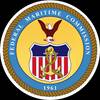Rear Adm.(lower half) Brian B. Brown relieved Rear Adm. Jonathan W. White as commander of the Naval Meteorology and Oceanography Command (NAVMETOCCOM) in a traditional Navy change of command ceremony on Aug. 3 at Stennis Space Center.
"I am blessed to once again be part of the Navy's operational oceanography team and humbled to have been selected among so many talented officers to lead this command," Brown said to Naval Oceanography employees at the ceremony. "I am fortunate to be associated with such a professional and dedicated headquarters team and such depth of talent across all of Naval Oceanography."
For the past year, Brown has been the Executive Assistant to the Oceanographer and Navigator of the Navy in Washington, but he previously served at Stennis as commanding officer and executive officer of the Naval Oceanographic Office (NAVOCEANO) and on the NAVMETOCCOM staff. NAVOCEANO is NAVMETOCCOM's largest subordinate command.
He told the Sailors and civilians that he was proud of their capabilities and accomplishments.
"I know you are a treasured national asset, and like a boastful parent, I take every opportunity to brag about your achievements. I'm always in awe of the capabilities each of you bring to the Navy," he said.
White and Rear Adm. Mark Guadagnini, the ceremony's guest speaker, also talked about the contributions that Naval Oceanography makes to Navy operations. White also called Naval Oceanography a "gold medal team."
White and Brown were promoted minutes before the ceremony; White from rear admiral (lower half) to rear admiral, and Brown from captain to rear admiral (lower half).
White has been NAVMETOCCOM commander since 2009. He will move to Washington where he will become the Oceanographer and Navigator of the Navy. He was awarded a Legion of Merit at the ceremony.
NAVMETOCCOM directs the Navy's meteorology and oceanography programs, operates the Navy's atomic clock for precise time and tracks the positions of the stars for navigation. The command is comprised of approximately 2,500 officer, enlisted and civilian personnel stationed around the world. Naval Oceanography enables the safety, speed and operational effectiveness of the fleet by identifying the risks and opportunities for naval and joint forces posed by the present and future natural environment.



